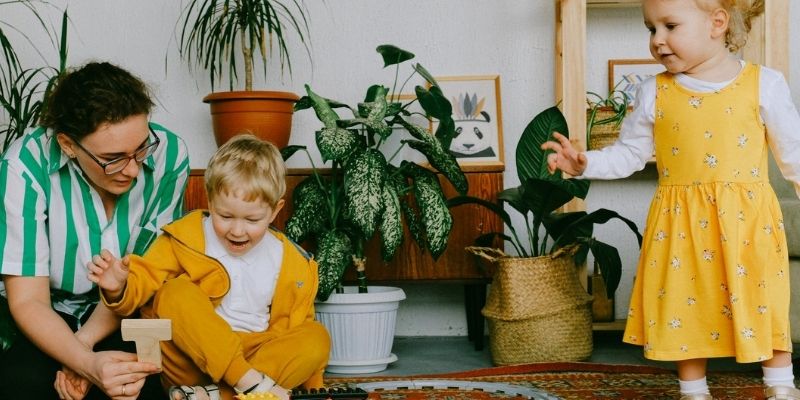Mathematics is a critical part of STEM education, and yet it is a subject that many students find daunting. Whether you’re a teacher or a parent, you know what a struggle it is having kids complete their math activities, let alone make them love the subject.
Fortunately, there is a simple solution to this: switching from traditional tutoring to more unorthodox teaching strategies to help students learn and love the subject. One method would be getting your child to attend STEM camps for kids and using fun and exciting activities to lock in their interest.
And what better way to do that than through engaging and creative math games?
Wondering what activities can shine a positive light on math? Here are five games you can play with your students today:
1. Math Bingo
Besides adding an interesting twist to the original game, Math Bingo helps kids of different ages – particularly those in grades 3 to 6 – practice multiplying or using multiplication tables.
How to Do It:
Distribute bingo cards to the students. The mechanics will be very much like the original game, except instead of calling out numbers, you state an equation (i.e., a multiplicand and multiplier) that produces the digits you draw.
For example, if you got 32 from your bingo roller or shaker, you could state the equation 4×8 or 16×2 since both products are equal to that same number.
Once the students compute for the product of the equation, they can mark the number if it is present in their bingo cards.
You can also allow a spare sheet of paper they can use for solving multiplication problems.
2. Math Paper Plate Block
This is the perfect game for children who are just learning to tell the time. Plus, it is an excellent way to foster their creativity while practicing an important, basic skill.
How to Do It:
Make a small hole on the paper plate’s center where the clock’s hands will be attached to. Then have the students write the numbers corresponding to the hours of the day.
With colored paper, have them cut the clock hands. The challenge here is to get the right size for the hour and minute hands. Once they’re done cutting, ask them to secure the hands to the center hole using a split pin and make them arrange the hands according to your chosen time.
3. ‘Round the Block
This game adds a twist to the fun party game “Pass the Ball,” which will surely keep the ball rolling in your student’s math learning in class or at home.
How to Do It:
With the children standing in a square, start by handing a ball to one player. Then, give that person a math challenge that calls for a list (e.g., count by twos or name shapes with right angles). Just before the child gives their answer, they should pass the ball to the next person and so on.
In this activity, the sequence or list that serves as an answer to the mathematical problems presented will serve as the music in the traditional “Pass the Ball” game. The first student should be able to answer before the ball returns to them. Otherwise, They’re out of the game.
If the child answers correctly, the next student will be given a different problem to solve, and the ball goes back around in the opposite direction.
4. Hopscotch Math
This activity combines physical and intellectual exercise in one, making it twice as fun and beneficial for students. Hopscotch Math is most recommended for students in Grades 1 to 4 as it lets students add and subtract numbers while playing.
How to Do It:
Draw a hopscotch grid on the floor using chalk or charcoal (if you’re playing on a rough floor), a stick (if you’re playing on soil), or masking tape (if you’re playing on a tiled or smooth surface). Make sure that the grid resembles a calculator.
Here’s where the fun begins:
Once the grid is in place, have the first player toss a stone to the spot where “1” is written. Then, the child needs to hop on equations with the same outcome as the number their stone is currently in.
For example, if the stone goes to number 1, the player should hop from squares 1, plus, and 0 or 3, minus, and 2.
The tricky part is that the player should step on odd numbers and zeros using one foot and even numbers and mathematical symbols using both feet.
Their turn continues through the numbers until the player makes a mistake, such as hopping on the wrong equation or stepping on the line.
If you’re playing with older students, you can tweak this game to make it more challenging, like adding a square root symbol.
Double-digit answers should be split in the last hop, with the left foot on the number for the 10s place and the right foot on the figure for the ones place.
5. Weight Guessing Game
As it is named, this game allows children to guess whether an item is light or heavy. It uses their innate love for guessing in fostering a liking for mathematics.
How to Do It:
Present a series of items to your students. Just by looking at the items, ask them to write down what they think is their weight on a sheet of paper. You may also let them hold each item one by one to gauge the items’ actual weights.
Once all answers are in, you can have the students weigh each item on their kitchen scales and record the correct answer beside their guesses.
For this activity, you can also use several kinds of fruits and vegetables, such as bananas, oranges, kiwis, tomatoes, cucumbers, and bell peppers. Have the students arrange every item from the lightest to the heaviest object or the other way around.
Want to make the activity more challenging and enlightening at the same time? Slice the fruit and vegetables in half and have the students analyze how it affects each item’s weight and density.
Make Math More Fun
With the right method and teaching strategy, you can make learning mathematics in Dubai a fun endeavor. Consider preparing the games and activities here for your next learning session to engage your students more.




